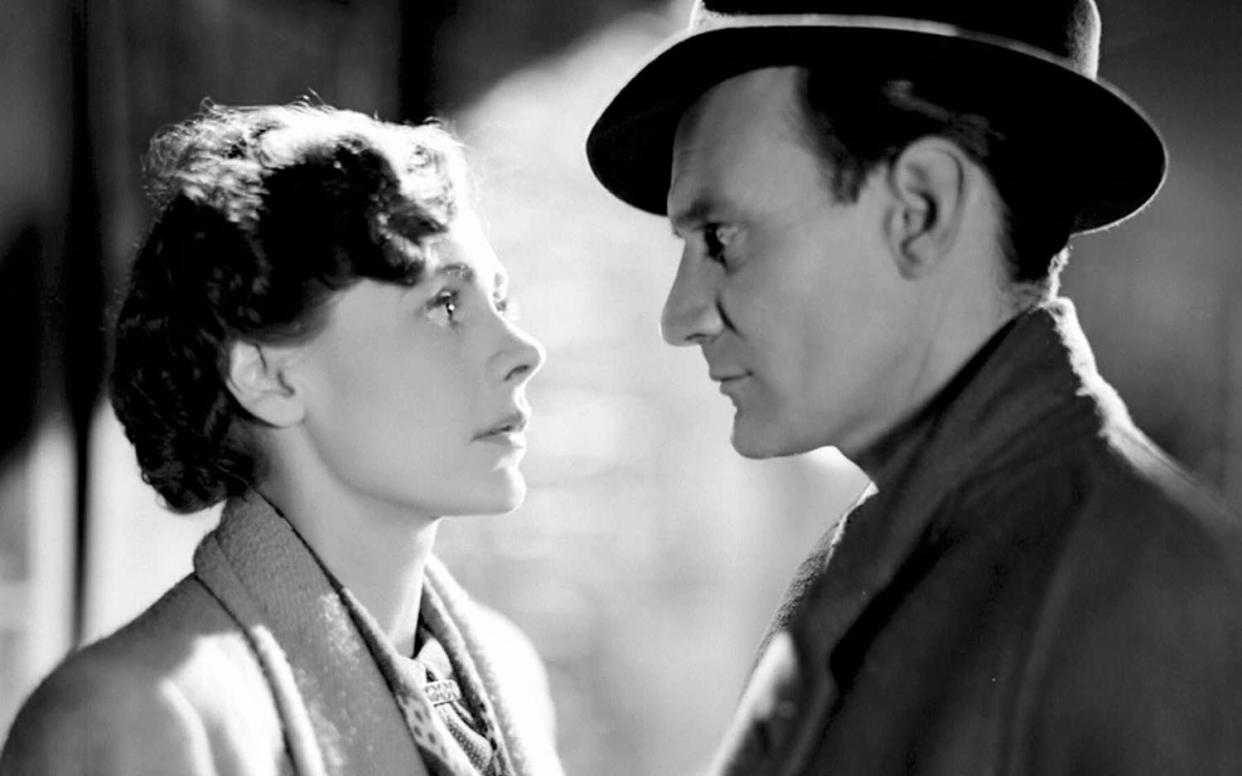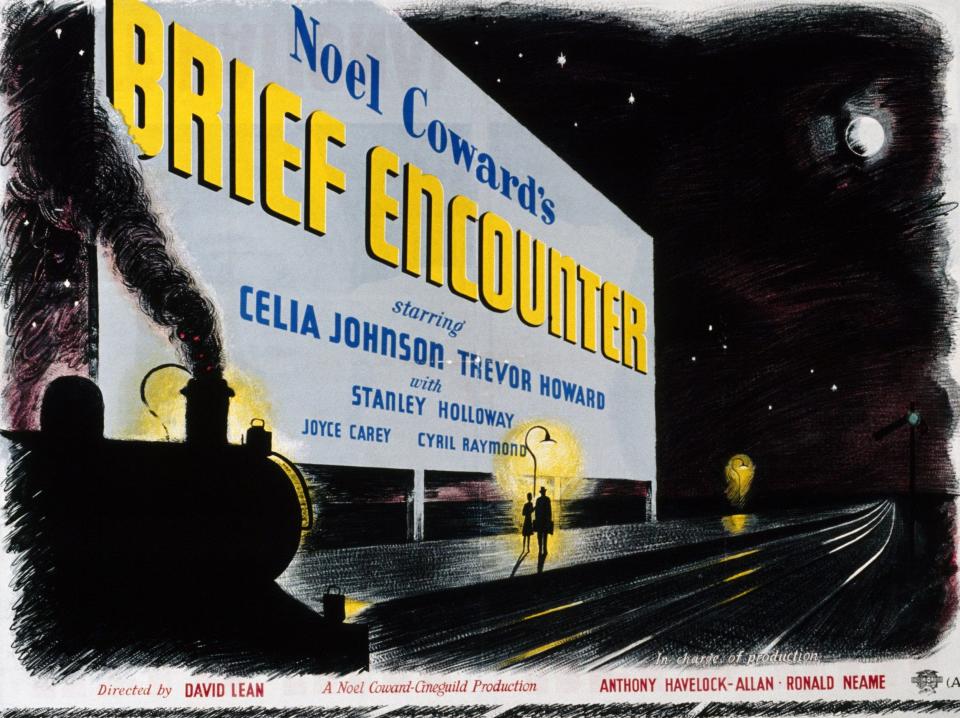How Brief Encounter gave us cinema's greatest break-up scene

In the first week of May, 1945, Celia Johnson was hard at work. Shooting was nearing completion on David Lean’s Brief Encounter, which would prove her most celebrated film, at Denham Studios in Buckinghamshire. Meanwhile, her husband Peter Fleming – brother of Ian – was in New Delhi heading up military deception operations.
She wrote to him of imminent victory being rather a chore. “[It] gets nearer and nearer until the very sound of it begins to get a bit boring and tiresome,” she griped. That day, the one thing that marked the occasion was a bottle of white wine being whipped out by the generally frugal producer at lunch, while filming paused between shots so the crew could follow developments on the radio.
It fits this, of all films, that a mood of tense expectation about Britain’s future pervaded the set. But while Brief Encounter is so often misremembered as the quintessential wartime romance, the period of its story is never specified – and must really be pre-war. The star-crossed lovers say goodbye in a station cafe, simply because ordinary life forbids them carrying on.
The scene
A friendship struck up at “Milford Junction” refreshment room, where Alex (Trevor Howard) helped Laura (Johnson) get some grit out of her eye some months earlier, has brought them back for a last farewell. Though the two are in love, both are married, and neither can contemplate the stigma of infidelity in an age of stifling convention. Alec, a doctor, has accepted a job in Johannesburg, and this is the last time they will ever meet.
They sit together in quiet desolation, taking tea, like parodies of English people, before the train comes that will spirit him away. There’s so much to say, so little time. And then the universe plays its cruellest prank. An acquaintance of Laura’s called Dolly Messiter (Everley Gregg) comes barrelling in, all hat boxes, furs and small talk, and plants herself unbidden at their table, gobbling up the precious few minutes still left.
Why is it so good?
Everyone, of course, remembers the music in Brief Encounter – Rachmaninov’s tempestuously romantic Piano Concerto No 2. All that roiling emotionalism pipes up to say everything the characters cannot, as if in flagrant defiance of the stiff-upper-lip etiquette that binds them. But the masterstroke of this scene isn’t the sound of those plashing chords under the couple’s tender despair at tea.
It’s the moment the music is brutally yanked away. This coincides to the millisecond with the arrival of Dolly Messiter – “poor, well-meaning, irritating Dolly Messiter...”, as Laura’s voiceover tragically recalls. The soundtrack is suddenly all Dolly: not those dreamy, legato strings, but a human foghorn bleating out “Laura! What a lovely surprise!”. In this context, her volume level is akin to one of Michael Bay’s Transformers crashing in.
Dolly – surely the most unwelcome interloper in film history – just can’t be got rid of, and her impact on the scene is devastating. The last time Laura and Alec even get to share the same frame, with this busybody chattering all over them, it isn’t with a kiss or a longing glance, but with the brief shot of his hand on her shoulder. And then, as Alec empties the shot by leaving the café forever, Dolly’s oblivious face comes swooping down to fill it.
There’s a great touch in Robert Krasker’s lighting, too. As Johnson, staring into space, contemplates her sudden solitude, all the ambient light around her drops away, leaving her marooned in pitiless darkness. And even Dolly’s idle blather dies out – which at least counts as a minor mercy.

Behind the scenes
Carnforth, in north Lancashire, doubled as Milford Junction in Kent for the exterior shots of the station, and thereby has its place in British film history sufficiently enshrined that Brief Encounter plays there daily now – next to a refreshment room restored to look exactly like the indoor set they built at Denham.
For logistical reasons, it was necessary to shoot the Carnforth scenes at night, adding a cloak-and-dagger element to the romantic fatalism of Noël Coward’s story. But Johnson remembered shooting until 7.30am, “by which time the fish train from Aberdeen had pervaded the place,” as she wrote to a friend. “I was playing a sad little scene with the scent of herrings in the air and milk cans rattling.”
Having already starred in two other wartime Lean-Coward collaborations, In Which We Serve (1942) and This Happy Breed (1944), she was very much the more famous of the two leads, and was commensurately paid much, much more – £12,000 (£475,000 today).
Howard, a near-complete unknown, was paid a mere £500 (£20,000) for his own role, and had trouble understanding the story. When the two go back to a friend’s bachelor pad in the rain, he thought it was quite clear what the implication was, and found their restraint bewildering. “Why doesn’t he just get stuck in?”, he asked Lean.
“Trevor was so insensitive,” Lean later recalled, “that he didn’t know what we were doing half the time. He later became a wonderful actor. But, oh dear, there were a lot of things that went straight over his head.”

Reception
Brief Encounter was only the 21st biggest hit in the UK for 1946, a surprisingly meagre showing given its iconic stature now. The thwarted melancholy perhaps didn’t quite chime with a national mood of post-war jubilation, and the timeless quality for which Lean was striving didn’t sink in until later. Still, it was rapturously reviewed, and enough of a success in America that it got three Oscar nominations, for Best Director, Actress (Johnson) and Screenplay.
Legacy
Brief Encounter has been re-adapted nearly countless times for radio, TV, and the stage – even as a two-act opera, by André Previn and John Caird, in 2009. Among the many films which tip a hat in its direction, from Richard Linklater’s Before Sunrise (1995) to Sofia Coppola’s Lost in Translation (2003), there is one which pays it full-bore homage with a pesky intruder almost as throttleable as Dolly. It’s Todd Haynes’s Carol (2015), about a love affair in 1952 that daren’t exist – and yet somehow does.
Let Tim know your thoughts
What’s the greatest movie scene of all time? Tim Robey will be in the comments section below between 12pm and 1pm on May 15 so you can share thoughts about a century of cinema magic

